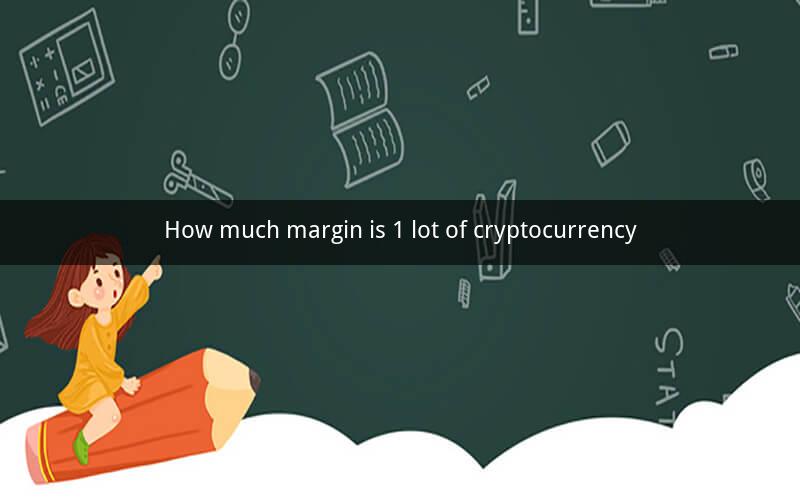
How Much Margin is Required for 1 Lot of Cryptocurrency?
Table of Contents
1. Introduction to Cryptocurrency Margin Trading
2. Understanding the Concept of a Lot in Cryptocurrency
3. The Importance of Margin in Cryptocurrency Trading
4. Factors Influencing the Margin Requirement for 1 Lot
5. Calculating the Margin Requirement for 1 Lot
6. Margin Requirements Across Different Cryptocurrency Exchanges
7. Risks and Considerations When Using Margin
8. Best Practices for Margin Trading
9. Conclusion
1. Introduction to Cryptocurrency Margin Trading
Cryptocurrency margin trading allows traders to leverage their capital to increase their potential returns. By borrowing funds from a broker, traders can control a larger position than they would be able to with their own capital. However, this strategy also amplifies potential losses. Understanding the margin required for trading 1 lot of cryptocurrency is crucial for making informed decisions.
2. Understanding the Concept of a Lot in Cryptocurrency
In the context of cryptocurrency trading, a lot refers to a standardized unit of currency that is used to measure the size of a trade. The size of a lot can vary depending on the asset and the trading platform. For example, in the forex market, a standard lot is typically 100,000 units of the base currency. In cryptocurrency trading, the lot size can range from 0.01 to 1, depending on the exchange and the cryptocurrency being traded.
3. The Importance of Margin in Cryptocurrency Trading
Margin is the collateral that traders use to secure a loan from a broker. It is used to control a larger position than the trader's own capital would allow. The margin requirement is determined by the leverage ratio, which is the amount of capital a trader can control with the borrowed funds. The higher the leverage, the less margin is required, but the greater the risk.
4. Factors Influencing the Margin Requirement for 1 Lot
Several factors influence the margin requirement for 1 lot of cryptocurrency:
- Leverage Ratio: The higher the leverage, the lower the margin requirement.
- Market Volatility: Highly volatile markets may require higher margin due to the increased risk of the position moving against the trader.
- Exchange Policies: Different exchanges have different margin requirements for the same cryptocurrency.
- Collateral Type: The type of collateral a trader uses can also affect the margin requirement.
5. Calculating the Margin Requirement for 1 Lot
To calculate the margin requirement for 1 lot of cryptocurrency, use the following formula:
```
Margin Requirement = (Position Size x Price) / Leverage Ratio
```
For example, if the price of Bitcoin is $30,000 and the leverage ratio is 10:1, the margin requirement for 1 lot would be:
```
Margin Requirement = (1 x $30,000) / 10 = $3,000
```
6. Margin Requirements Across Different Cryptocurrency Exchanges
Margin requirements can vary significantly across different exchanges. Some popular exchanges and their typical margin requirements for Bitcoin include:
- Binance: 2.5% for perpetual contracts
- BitMEX: 5% for perpetual contracts
- Kraken: 20% for margin trading
7. Risks and Considerations When Using Margin
Trading with margin carries several risks:
- Leverage Risk: High leverage can amplify both gains and losses.
- Liquidation Risk: If the market moves against the trader, they may be subject to a margin call and forced to exit their position.
- Interest Costs: Borrowing funds incurs interest costs that can eat into profits.
8. Best Practices for Margin Trading
To mitigate risks, consider the following best practices:
- Understand the Leverage Ratio: Choose a leverage ratio that aligns with your risk tolerance and trading strategy.
- Start Small: Begin with a small position size to get a feel for margin trading before increasing your exposure.
- Monitor Your Positions: Keep a close eye on your positions to avoid unexpected losses.
- Use Stop-Loss Orders: Implement stop-loss orders to limit potential losses.
9. Conclusion
Understanding how much margin is required for 1 lot of cryptocurrency is essential for successful margin trading. By calculating the margin requirement, considering market conditions, and following best practices, traders can manage their risks and potentially enhance their returns.
---
Questions and Answers
1. What is the difference between a margin and leverage in cryptocurrency trading?
- A margin is the collateral used to secure a loan, while leverage is the ratio of the borrowed funds to the trader's capital.
2. Can margin trading be profitable without leverage?
- Margin trading can be profitable without leverage, but it would require larger capital and potentially more risk.
3. How does the volatility of a cryptocurrency affect margin requirements?
- Higher volatility can lead to higher margin requirements due to the increased risk of the position moving against the trader.
4. What happens if a trader receives a margin call?
- A margin call requires the trader to deposit additional funds to maintain their position. If they fail to do so, their position may be liquidated.
5. Can a trader lose more than their initial investment when using margin?
- Yes, traders can lose more than their initial investment due to the amplified effect of leverage.
6. Is margin trading suitable for beginners?
- Margin trading is not recommended for beginners due to the increased risk and complexity.
7. How can a trader determine the right leverage ratio for their trading style?
- Traders should consider their risk tolerance, trading experience, and market conditions when choosing a leverage ratio.
8. What is the purpose of a stop-loss order in margin trading?
- A stop-loss order is used to limit potential losses by automatically closing a position when it reaches a certain price.
9. Can margin trading be used for short-selling cryptocurrencies?
- Yes, margin trading can be used for short-selling cryptocurrencies, allowing traders to profit from price declines.
10. How can a trader protect themselves from the risks associated with margin trading?
- Traders can protect themselves by understanding the risks, using stop-loss orders, and managing their positions carefully.